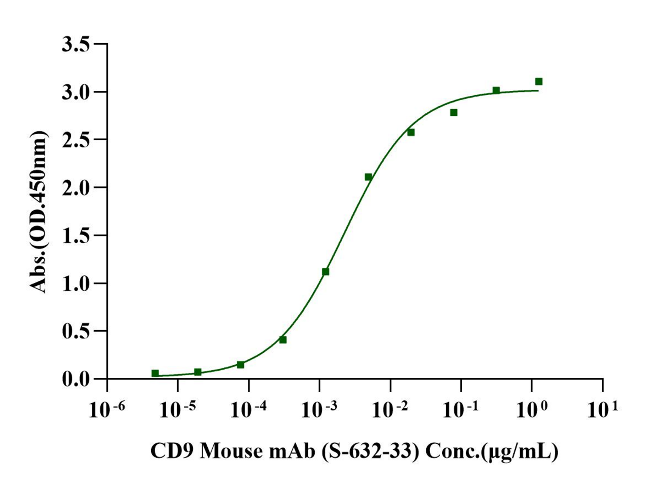11-12kDa (Reducing)
Reconstitute at 0.1-1 mg/ml according to the size in ultrapure water after rapid centrifugation.
Ho IC, et al. (2009) GATA3 and the T-cell lineage: essential functions before and after T-helper-2-cell differentiation. Nat Rev Immunol. 9 (2): 125-35. Matesanz-Isabel J, et al. (2011) New B-cell CD molecules. Immunology Letters.134 (2): 104-12.
CD9 antigen is a multi-pass membrane protein which belongs to the tetraspanin (TM4SF) family or the transmembrane 4 superfamily. It is a cell surface glycoprotein that is known to complex with integrins and other transmembrane 4 superfamily proteins. It is found expressed on the surface of the exosomes. The protein takes part in cellular signal transduction events and thus play a role in the regulation of cell development and activation, growth and motility. Besides, CD9 seems to be a key role in the egg-sperm fusion during the mammalian fertilization processes.
1μg (R: reducing condition, N: non-reducing condition).

Immobilized CD9/Tspan-29 His Tag, Human (Cat. No. UA010729) at 2.0μg/mL (100μL/well) can bind CD9 Mouse mAb (S-632-33) (Cat. No. S0B0409) with EC50 of 1.69-2.96ng/mL.